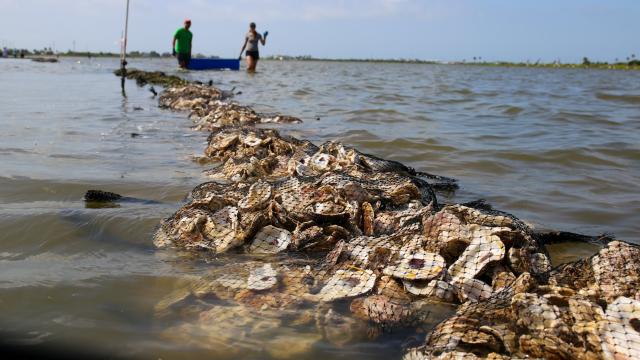If you eat oysters in Galveston, there’s a chance your discarded oyster shells will end up back in the bay near the Texas city. Unlike throwing trash in the sea, that’s a good thing.
The Galveston Bay Foundation takes discarded shells from area restaurants on a weekly basis, and uses them to create “new” reused homes for marine life and lay down miles of shoreline protection for the bay. The foundation has been running its Oyster Shell Recycling Program since 2011, officials told Earther, when it was approached by a local restaurant owner who asked whether it would be possible to return the shells being thrown out at his restaurant to the bay. At that time, Galveston Bay had lost more than 50% of its oyster habitat from Hurricane Ike, which struck the region in 2008.
“There was a huge need to address oyster restoration because that storm basically brought in so much sediment that it choked those oysters, essentially suffocating them,” Haille Leija, habitat restoration manager at the foundation, said.
Earther talked to Leija and others involved in the innovative program and asked them to run us through how it worked. Let me tell you, the program will completely change your understanding of trash at your table.
Recycling Shells Actually Helps Save Restaurants Money
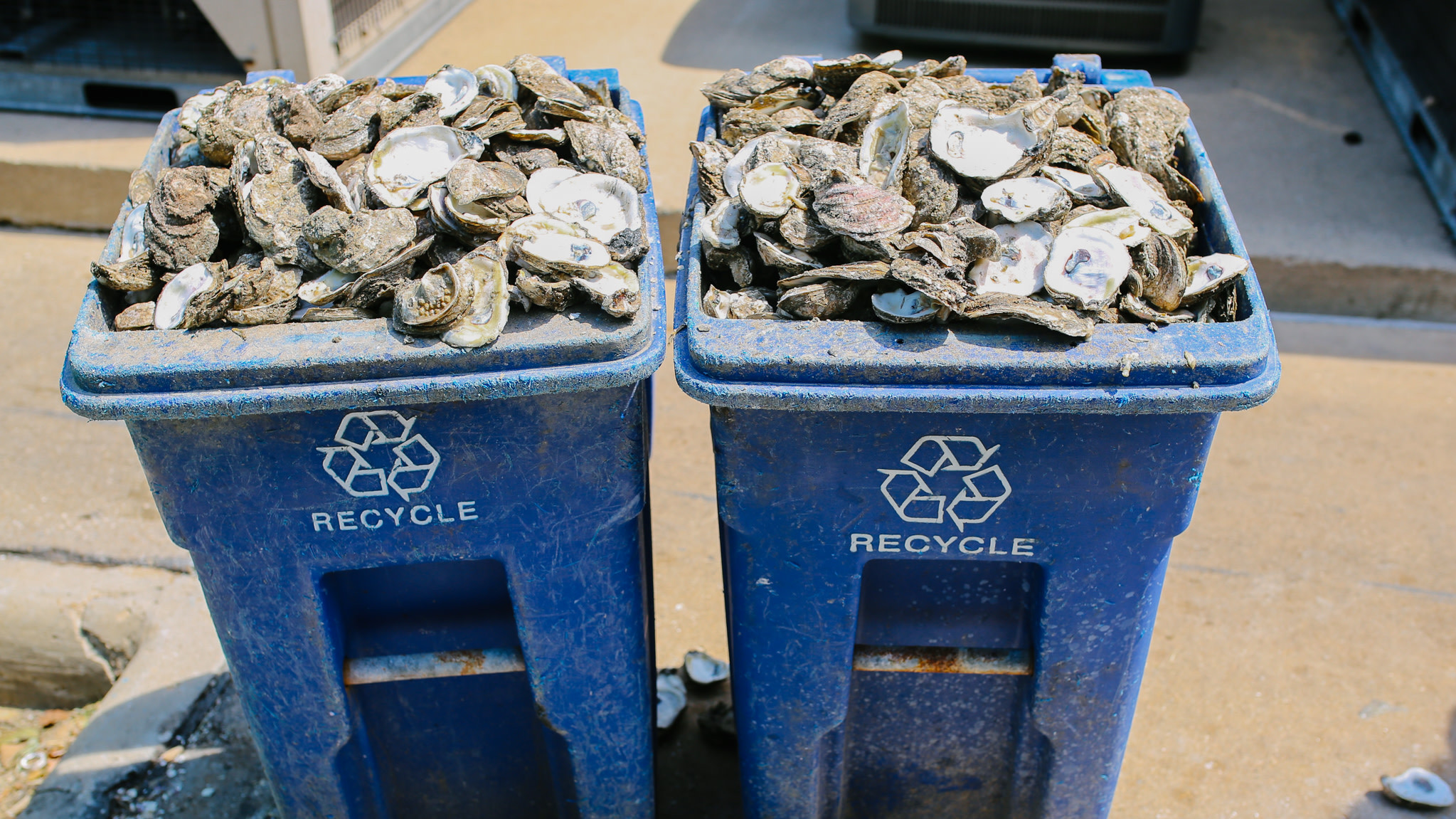
After being approached by Tom Tollett, owner of Tommy’s Restaurant Oyster Bar, Leija said the foundation got to work. The program began with Tommy’s, but has grown over the years. Today, it includes 10 restaurants in the Galveston Bay area. Tollett, who helped start the program, is on the foundation’s board. The effort actually helps restaurants save on some waste management costs, and the foundation provides the recycling receptacles.
“A lot of their garbage that’s collected is based on tonnage…and so by us taking that shell off their hands, they actually save on the number of waste pickups they have to pay for,” Leija said. “They don’t have to pay for a thing, at least not yet. We hope we never have to charge a fee.”
As long as funding keeps coming in — the program is supported by federal and state funds, as well as corporate and private donations — the foundation plans on continuing to offer restaurants this service for free. To date, the program has recycled 970 tonnes of oyster shells.
Curing in the Sun

Once the foundation brings a restaurant on board as a partner, staff proceeds to collect the recycled shells weekly using a trailer. The trailer can hold 20 recycling bins, and each bin can hold up to 90 kilograms of shell. Staff takes collected shell to one of the program’s curing sites, which are upland properties that it manages.
Curing sites have to be far away from residential areas, Leija explained, because the discarded shells can have leftover food particles stuck on them and stink. Then, the waiting begins. Texas regulations require the foundation to store the shells on land for at least six months to disinfect them naturally. This process allows the shells, which are rotated by staff with a tractor over time, to get exposed to the sun. In the end, it will eliminate any bacteria or other pathogens on the shells, ensuring that they don’t bring anything dangerous along with them when they’re dropped in the bay.
“We don’t want to be putting a non-native species or additional bacteria into the bay, and so this sun curing process helps secure that that won’t happen,” Leija said.
She added that since shell recycling is a fairly new process that’s only been around for about 10 to 15 years, there are only a handful of studies that have been done on it. The foundation is trying to launch some studies to see whether Texas’ hot climate impacts the time needed for curing the shells. Until it knows the answer, it follows the timeframe set by the state to ensure no contaminants are put back into water.
Why Recycled Shells Are So Important for Oysters

In order to understand why the oyster shells are valuable and worth recycling, you have to know a bit about oysters. I personally don’t eat a lot of seafood, so Leija graciously gave me a rundown. Oysters are bi-valved mollusks, or organisms with a two-part hinged shell that contains a soft-bodied invertebrate. To reproduce, they release eggs and sperm into the water, which meet and then begin the fertilisation process, eventually becoming larvae.
Larvae swim and eat phytoplankton in the water column for about two weeks and then begin looking for a hard substrate to latch onto. Once they find it, they become spat (juvenile oysters), which dedicate all their energy into shell growth.
Problems arise when they don’t find anything suitable to grow on. That’s what has happened in Galveston Bay when Hurricane Ike blew through and deposited sediment on top of old historic reefs, suffocating them. The reefs have also been impacted by commercial dredging in the region.
“If there is not something hard like other oysters or oyster shell to attach to, they actually will descend into the sediment and suffocate and die,” Leija said. “You have to have something hard on that bottom of the bay for them to live on.”
Many people have found oysters attached to tires or old posts, Leija said, and they’ll pretty much grow on anything. However, she said that there are studies that show that oysters, which are reef-forming creatures, tend to want to stick together. Staying together also enhances their ability to reproduce and gives them a better chance of reproduction success. The discarded shells could offer a lifeline to the bay’s remaining oyster population.
Putting the Recycled Shells to Work
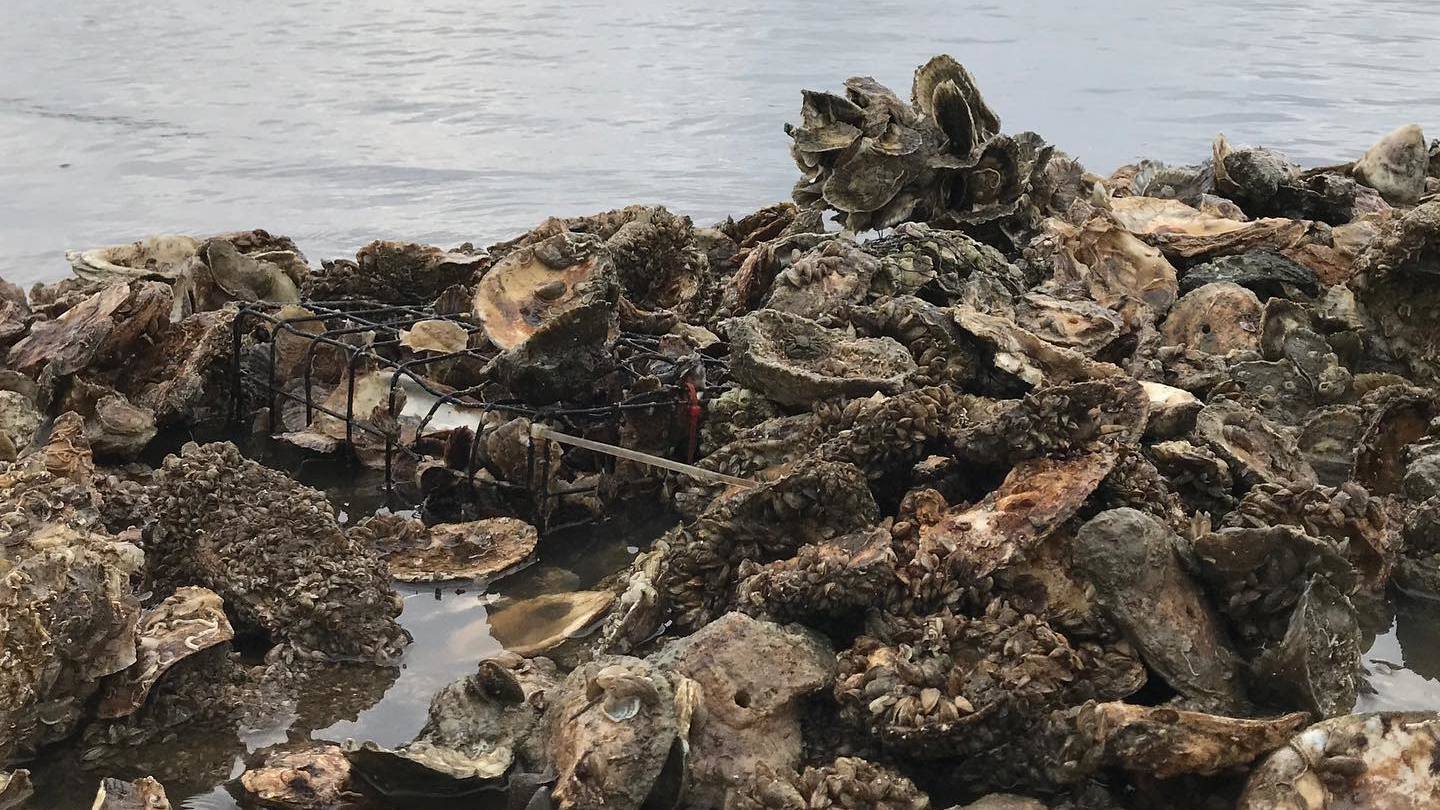
After six months of curing, it’s time to put those recycled shells to work. According to Leija, the recycled shells can have a three-fold benefit for oyster habitats, shorelines, and marshes.
The foundation is currently focused on incorporating the recycled oyster shells in living shoreline projects, which involve working with volunteers to build oyster-shell breakwaters along eroding shorelines. This consists of placing mesh aquaculture nets filled with recycled oyster shells parallel to the shoreline. These breakwaters provide new homes for baby oysters — as well as native fish, shrimp, and crab species — and also protect the shoreline from wave action, reducing erosion. Additionally, the breakwater allows natural marsh to grow behind it.
The foundation also offers bay front property owners the chance to grow their own oyster gardens using recycled oyster shells. Oyster gardening, which starts in May and June each year, involves volunteers suspending mini gardens in the water below their dock or pier and then staying on the lookout for new baby oysters on the recycled shells. In the fall, by which time the oysters grow to be the size of about one inch or more, the oysters are taken to restoration reefs.
While the above actions involve smaller volunteer-based projects, the foundation is also involved in large-scale reef restoration work through partnerships with the Texas Parks and Wildlife Department and the Nature Conservancy. This involves working with partners to place cultch material, such as river rock or limestone, on the bottom of Galveston Bay. Recycled shells are often placed on top of the cultch to help attract the oysters. Projects like this are rarer because they require additional funding and coordination, Leija said. In addition, these large-scale efforts often require hundreds of tonnes of shells.
A Monumental Task Carried Out by a Small Group of People
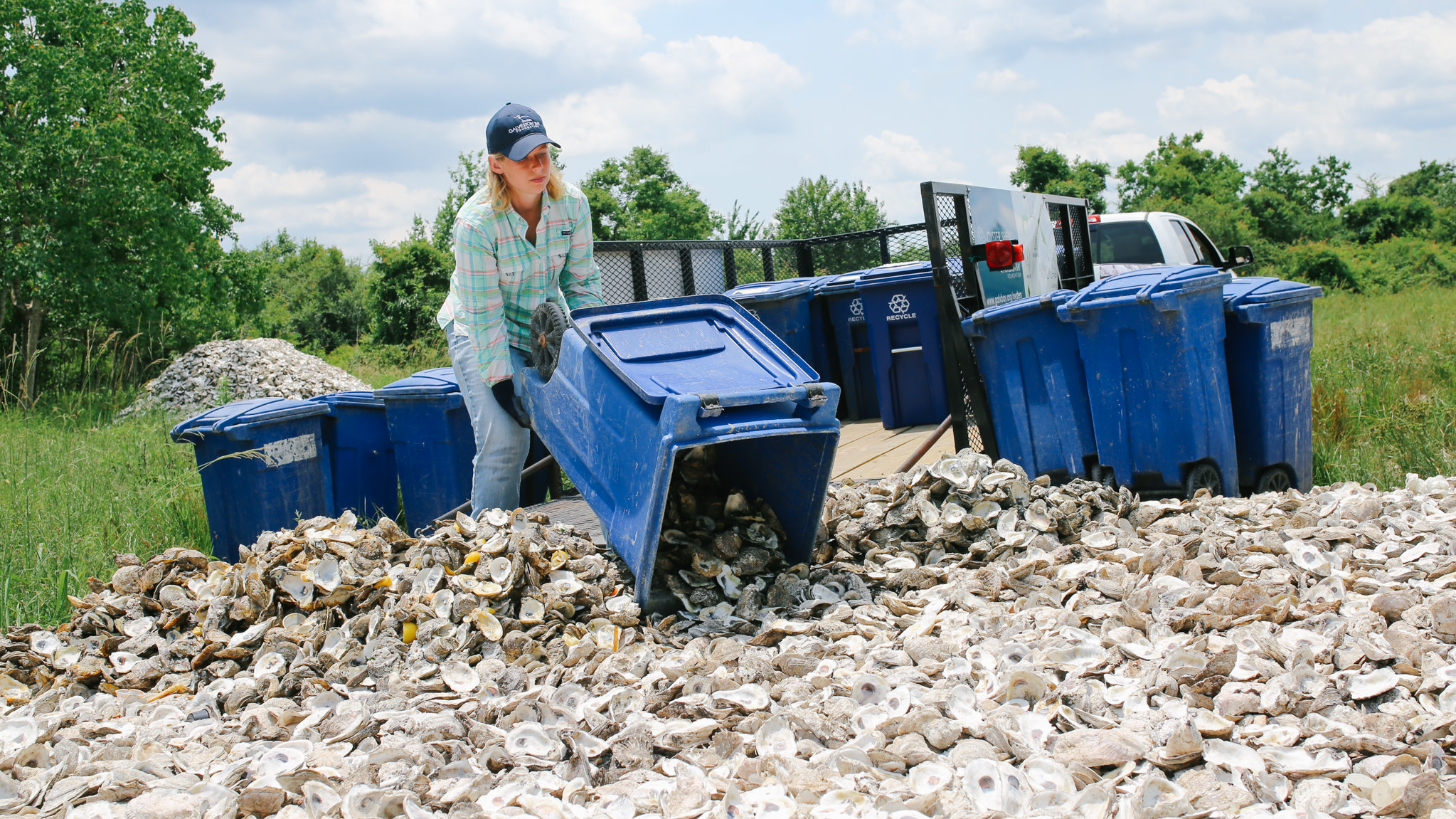
The entire program is carried out by three people. Leija manages the program as a whole, but she also has help from her colleague Shannon Batte, the foundation’s habitat restoration technician. She is the lead on shell recycling operations and handles pickups, drop offs, and restaurant partnerships. A third staffer helps with the oyster shell volunteer efforts.
Three times a week, Batte drives the foundation truck, which hauls the trailer, and makes three to five stops to local restaurant partners to pick up their full bins and drop off empty ones. She loads the recycling bins into the trailer and then drops the shells off at the foundation’s curing sites.
Batte said her experience with the program has been rewarding because it’s given her a firsthand experience of how the effort helps rebuild oyster populations. When asked about her favourite part of the program, Batte said she really liked monitoring the foundation’s reefs.
“Periodically we observe our oyster reefs to monitor their productivity and seeing baby oysters (also known as spat) growing on oyster shells that Galveston Bay Foundation has recycled is always exciting,” she said.
The Role of Restaurants
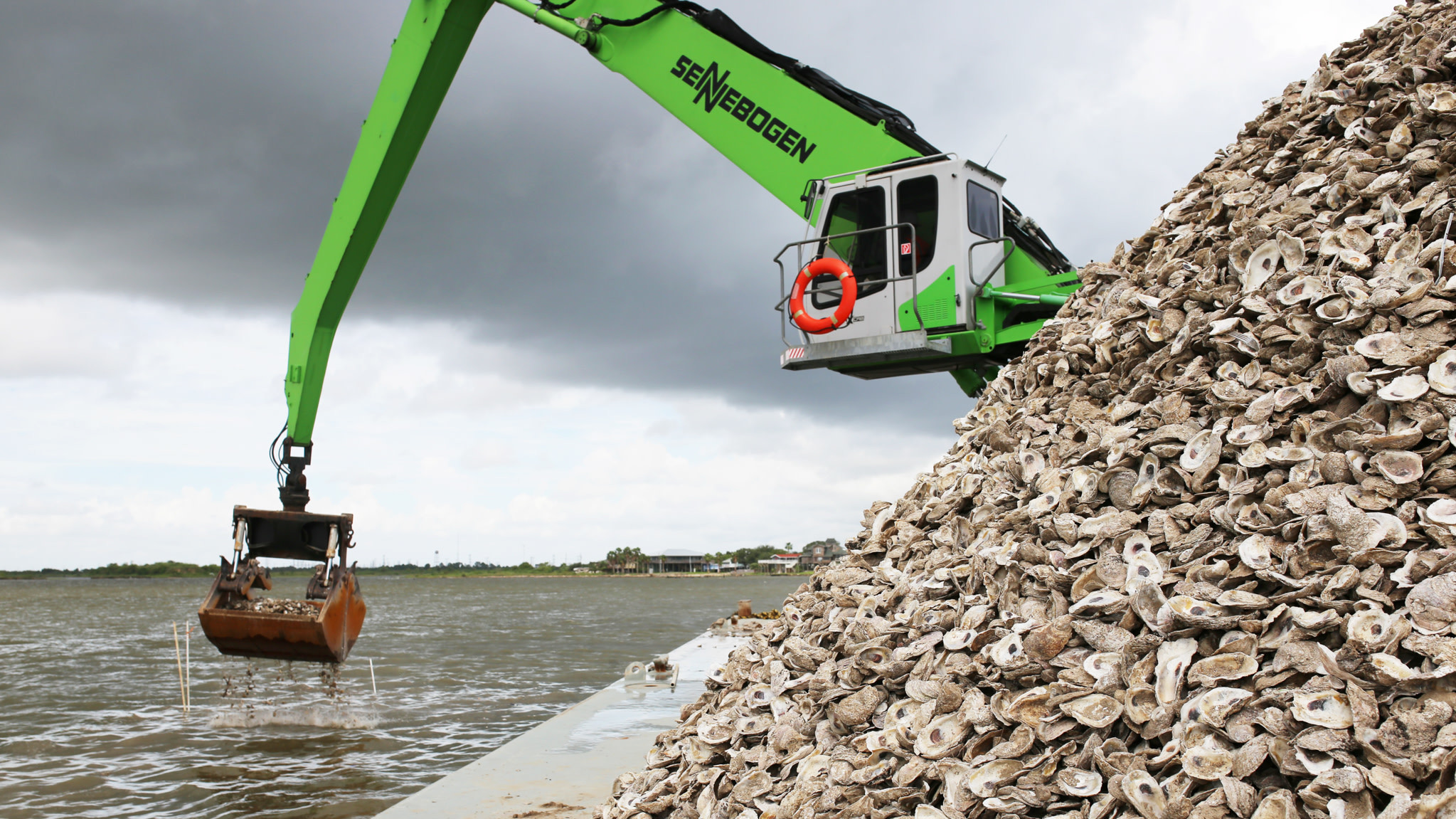
Although the program appears simple in its design, it involves a lot of hard work and coordination. Restaurant owners are very busy people and can be tough to get in touch with, Leija said.
Tollett, from Tommy’s Restaurant Oyster Bar, is a prime example of this. He was the first in the program, and recalled that he didn’t want to see the shells go to a landfill. After researching the matter, he found that shells were important for oyster growth and wanted to find a way to get those leftovers at his restaurant back into the bay. He contacted the foundation and has been working with them since. There were a few road bumps, Tollett said, such as flies, smell, and how often the bins were picked up, but they worked them out.
“We met with our staff to explain the importance of this project and [how] we needed them to participate,” Tollett said. “It was actually very easy for staff to understand the process. We have always encouraged staff to live sustainably and this was a great way to help the bay.”
To date, Tollett said his restaurant has recycled more than 1 million pounds of oyster shells back to the bay. Leija said that one lesson they’ve learned is that if they can get the owner, manager, or kitchen manager invested in the effort, recycling is a “flawless transition” with the restaurant’s staff.
The Covid-19 Effect
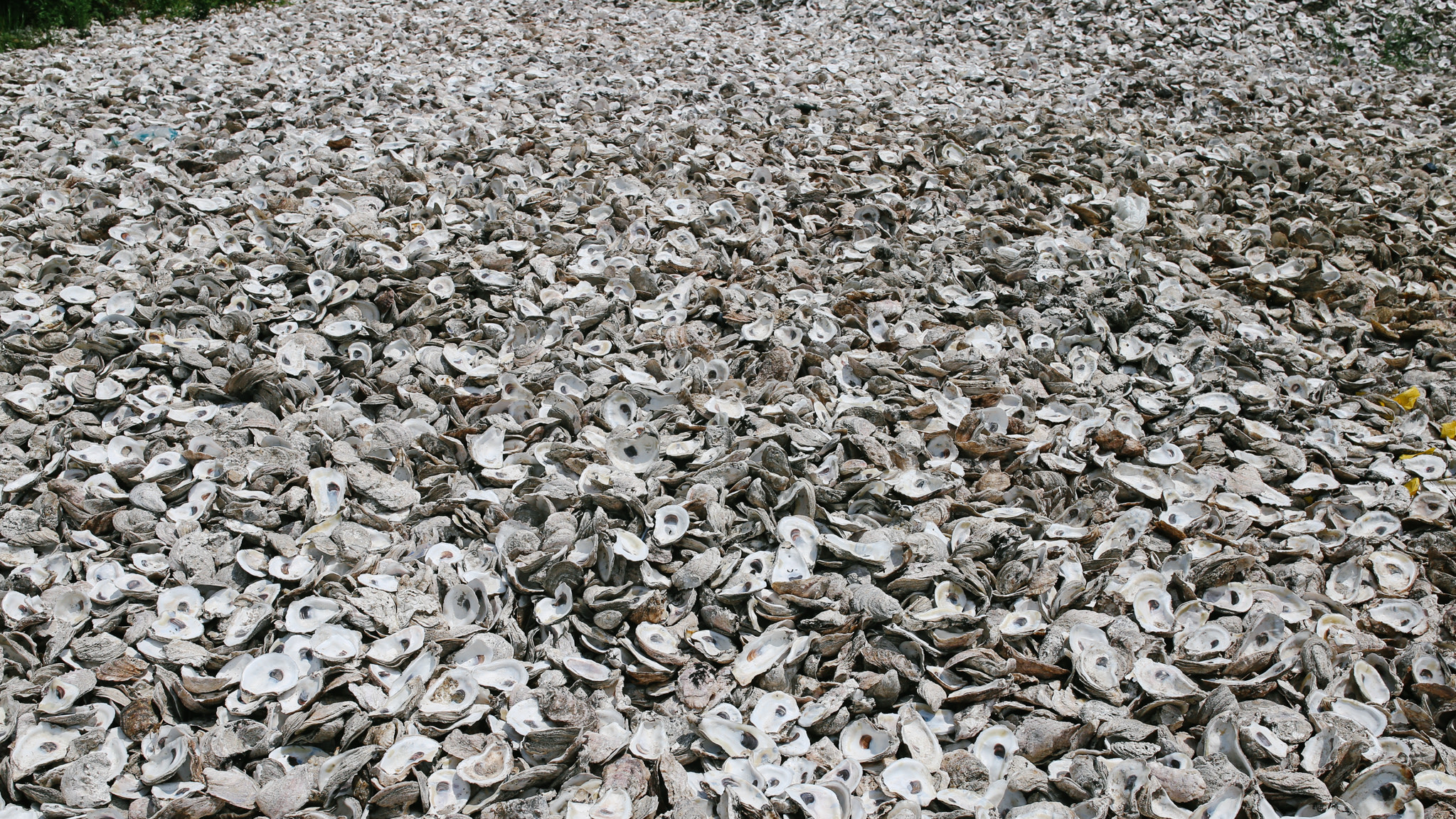
The program, like most of the world, stopped for a period of time because of the covid-19 pandemic. The foundation ceased operations in the spring when restaurants were forced to suspend dine-in services. Nevertheless, Leija said that the pause didn’t slow the foundation down too much since it was able to add new restaurant partners. Last year, the foundation recycled 103 tonnes of shells.
Although the pandemic didn’t impact the foundation’s shell collection, it did affect a bright spot on its calendar: Its inaugural Houston Oyster Festival. The festival, the proceeds of which went to the oyster shell recycling program, was scheduled for April of last year and was supposed to mark program’s expansion to restaurants in nearby Houston.
Leija said cancelling it was a huge disappointment, but for the best given the toll of the pandemic. Nonetheless, she said the foundation hoped to do some smaller oyster fundraising events this year while following covid-19 safety protocols. And longer term, the foundation is hoping that it can re-launch the Houston Oyster Festival and expansion in 2022, pending pandemic conditions.
The Future
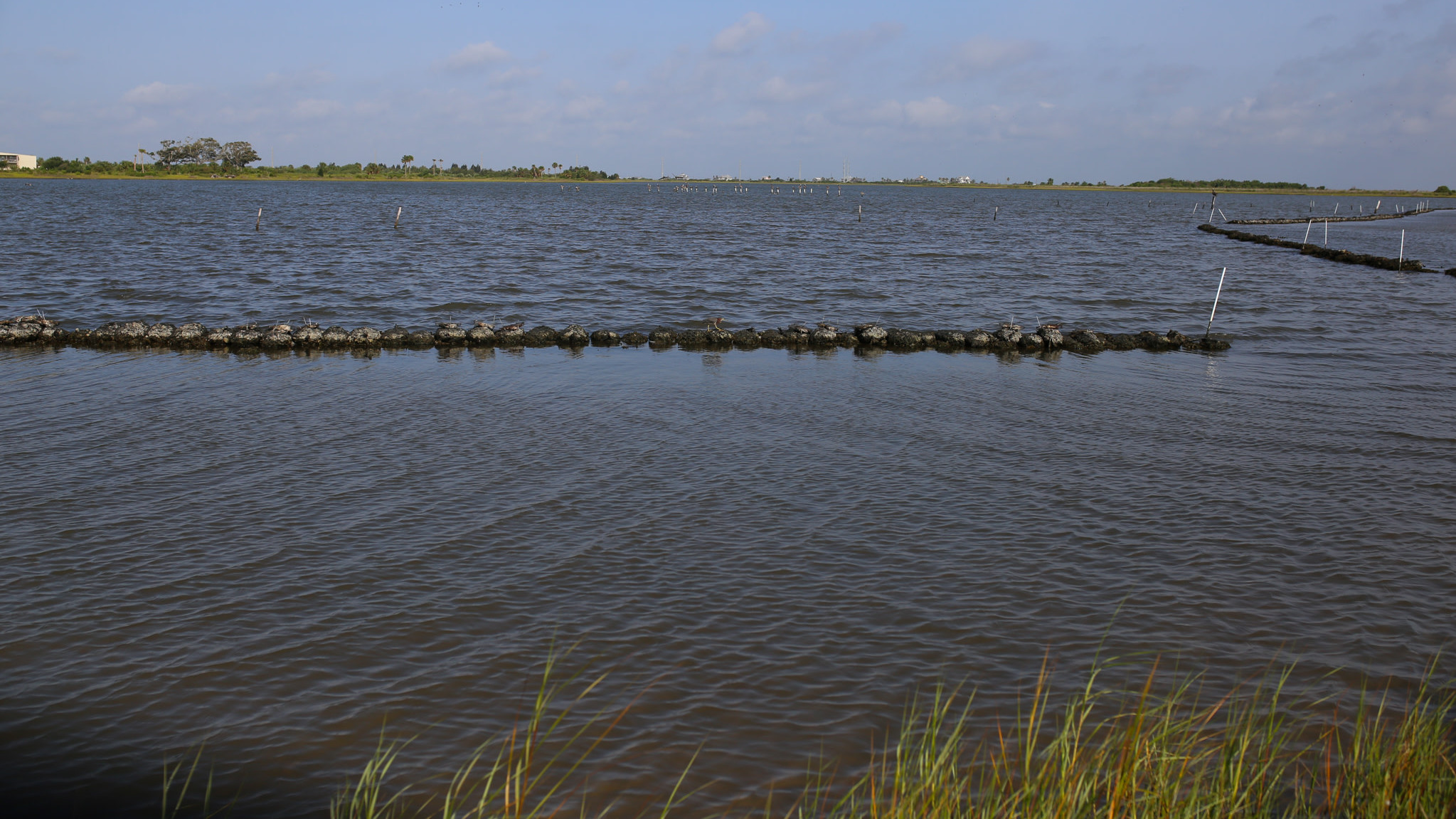
Even though the foundation’s big expansion into Houston has been postponed, its staff hasn’t stopped working. They’re still trying to do some piloting of the expansion with a restaurant in Houston. If all goes well, they might even be able to add one or two more restaurants in the city this year thanks to some new equipment coming in.
The goal is to increase the program’s capacity and efficiency. Nonetheless, Leija is also hoping to reduce the labour involved. The key here would be a small-scale dump truck. The model the foundation is looking at would double the amount of shell it can pick up at one time and work “essentially like a garbage collector,” Leija said.
However, these shells are anything but trash.
